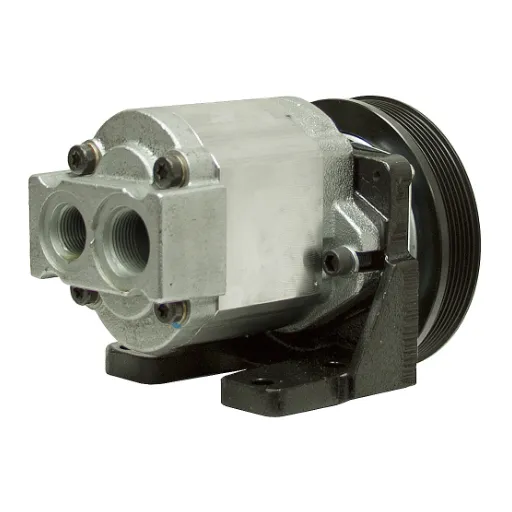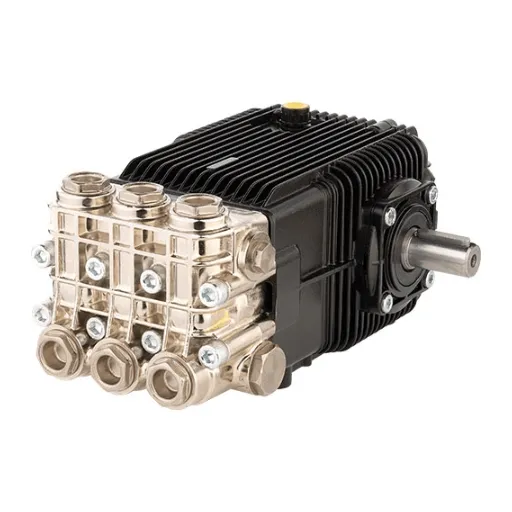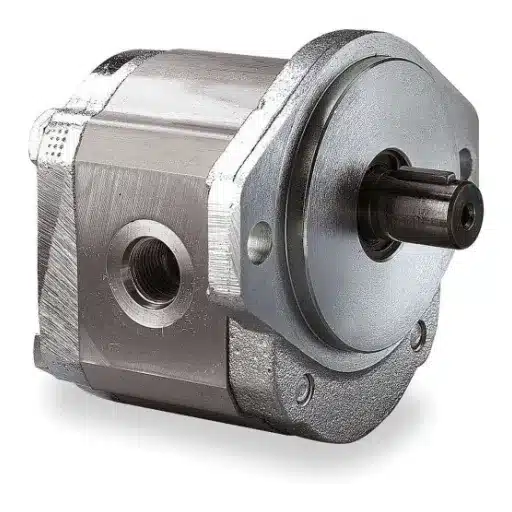Hydraulic axial piston pumps are at the heart of countless industrial and mobile applications, delivering precision and reliability in even the most demanding environments. From heavy machinery to aerospace systems, these pumps play a critical role in converting mechanical energy into hydraulic energy, making them indispensable across various sectors. This comprehensive guide explores the functionality, diverse applications, and cutting-edge innovations of hydraulic axial piston pumps. Whether you’re an engineering professional, a tech enthusiast, or simply curious about the inner workings of modern machinery, this article will illuminate how these powerful components drive efficiency and advancement in today’s technology-driven world.
Understanding the Hydraulic Axial Piston Pump

hydraulic axial piston pump
What is a Hydraulic Axial Piston Pump?
A hydraulic axial piston pump is a positive displacement pump that utilizes a series of pistons arranged in a circular fashion inside a cylinder block to generate fluid pressure. These pumps efficiently transfer energy to hydraulic systems, making them indispensable in various industrial and mobile applications.
Key Feature: The axis-wise movement of several pistons is created by a rotating shaft, allowing continuous intake and delivery of hydraulic fluid with steady pressurized output.
Since pump displacement can be varied, these pumps offer high versatility through precise control over hydraulic output. They find applications in situations requiring high efficiency and reliability, including:
- Heavy machinery operations
- Aviation systems
- Construction equipment
- Manufacturing systems
Key Components of Axial Piston Pumps
| Component | Function | Key Features |
|---|---|---|
| Cylinder Block | Houses multiple piston chambers | Enables uninterrupted fluid flow as it rotates |
| Pistons | Create a pumping action through a reciprocating motion | Precision-made for smooth motion and efficient compression |
| Swash Plate | Controls pump output by adjusting piston stroke length | Enables variable displacement through angle adjustment |
| Valve Plates | Manage the inlet and outlet flow | Ensure smooth fluid transition |
| Bearings | Provide mechanical stability | Support operation under high-pressure conditions |
Working Principles
Hydraulic axial piston pumps operate on the principle of converting mechanical energy into hydraulic energy through a systematic process:
- Intake Stroke: Pistons draw hydraulic fluid into cylinders
- Delivery Stroke: Pistons pressurize fluid into the system
- Flow Control: Inlet and outlet ports ensure smooth fluid transition
- Variable Output: Swash plate angle determines fluid volume production
Types of Axial Piston Pumps

hydraulic axial piston pump
Fixed Displacement Pumps
Definition: Pumps designed to produce a constant volume of fluid per rotation, providing steady hydraulic flow rates.
Key Advantages:
- Simplicity: Fewer moving parts reduce mechanical failure chances
- Cost-Effectiveness: Lower cost compared to variable displacement pumps
- Reliability: Consistent operation over extended periods
- Low Maintenance: Simplified design requires minimal upkeep
Common Applications:
- Industrial machinery
- Automotive systems
- Agricultural equipment
- Simple conveyor systems
- Hydraulic presses
Variable Displacement Pumps
Variable displacement pumps offer the ability to alter displacement according to system requirements, providing maximum efficiency and minimum energy consumption.
| Feature | Benefit | Application |
|---|---|---|
| Adjustable Flow Rate | Optimized energy consumption | Construction machinery |
| Electronic Control Systems | Real-time monitoring and adjustment | Aerospace systems |
| Advanced Sensors | Enhanced accuracy and responsiveness | Industrial equipment |
| Energy Savings | Up to 30% reduction in energy consumption | Various load conditions |
Swashplate Mechanism
The swashplate mechanism serves as the converter of rotary motion into linear motion, featuring an inclined plate that determines piston stroke length.
Modern Improvements:
- Advanced Materials: Enhanced wear resistance and durability
- Precision Manufacturing: Reduced friction losses
- Electronic Controls: Real-time optimization of swashplate positioning
- Energy Efficiency: Dynamic angle adjustment based on system demands
Applications of Hydraulic Axial Piston Pumps

hydraulic axial piston pump
Industrial Applications
| Industry | Applications | Key Benefits |
|---|---|---|
| Manufacturing & Automation | Presses, injection molding, robotics | Precise flow control, improved productivity |
| Construction & Heavy Equipment | Excavators, bulldozers, cranes | High hydraulic power, extreme load durability |
| Mining Operations | Drilling rigs, conveyor belts, ventilation | High-pressure capability, adverse environment operation |
| Energy Sector | Power plants, hydraulic turbines, steam systems | High efficiency, reduced energy losses |
| Marine & Offshore | Ship steering, offshore drilling platforms | Corrosion resistance, reliable marine operation |
Automotive Industry Usage
Hydraulic axial piston pumps provide essential services in automotive applications, ensuring optimal system performance through precision and reliability.
Key Automotive Applications:
- Power Steering Systems: Generate fluid pressure for smooth, controlled steering
- Automatic Transmission Systems: Provide necessary fluid pressure for improved gear shifting
- Brake Systems: Ensure sufficient hydraulic pressure for vehicle safety
- Hydraulic Suspension Systems: Support handling, stability, and smooth ride quality
- Cooling Systems: Control temperature in crucial powertrain components
Construction and Heavy Machinery
These pumps are fundamentally essential in construction and heavy machinery, where reliability and power are top priorities.
Modern Developments: Energy-efficient designs with variable displacement pumps that adjust flow rates to specific task requirements, conserving energy and extending equipment life.
Advanced Features:
- Smart sensors for real-time system monitoring
- Predictive failure prevention
- Automatic load sensing capabilities
- Operator-friendly controls
- Emission reduction technologies
Benefits of Using Hydraulic Axial Piston Pumps

hydraulic axial piston pump
Efficiency and Performance
| Benefit | Description | Impact |
|---|---|---|
| Precise Control | Accurate fluid pressure and flow management | Reduced energy consumption, optimized operations |
| High-Pressure Operation | Capability to work at very high pressures | Superior power density for heavy-duty applications |
| Variable Displacement | Adjustable performance parameters | Enhanced coordination with specific work situations |
| Smart Technology Integration | Predictive maintenance and real-time monitoring | Prevention of sudden shutdowns, extended pump life |
Durability and Longevity
These pumps are engineered for maximum endurance, featuring:
- Premium Materials: Hardened steel and specialized alloys
- Advanced Sealing: Top-notch sealing technologies preventing leakage
- Surface Treatments: Nitriding and ceramic coating for enhanced resistance
- Precision Manufacturing: Processes extending operational hours with minimal maintenance
Maintenance Innovation: Real-time diagnostic tools analyze operating conditions, providing early warnings of mechanical stress or component degradation.
Cost-Effectiveness in Operations
Hydraulic axial piston pumps represent the optimal blend of performance and affordability:
Cost-Saving Features:
- High Energy Conversion Efficiency: Optimal power utilization reduces operational costs
- Reduced Energy Losses: Lower running costs during operation
- Durability: Less frequent repairs and replacements
- Variable Displacement Options: Match output to load requirements
- Predictive Maintenance Integration: Prevent unexpected downtime
Maintenance and Troubleshooting Tips
Essential Maintenance Practices
| Practice | Frequency | Purpose |
|---|---|---|
| Regular Inspections | Daily/Weekly | Identify wear, leakages, and unusual vibrations |
| Lubrication Checks | Monthly | Minimize friction, prevent overheating |
| Filter & Seal Replacement | As scheduled | Prevent contamination, maintain efficiency |
| Operating Conditions Monitoring | Continuous | Track pressure, temperature, flow rate |
| Component Cleaning | Regular intervals | Prevent blockages, ensure smooth operation |
Extending Pump Lifespan
Modern Digital Technologies:
- IoT Sensors: Real-time monitoring of vibration, flow rate, and efficiency
- Predictive Maintenance Tools: 30% reduction in equipment downtime
- Variable Frequency Drives (VFDs): Energy conservation and stress reduction
- Early Warning Systems: 20% increase in average lifespan









